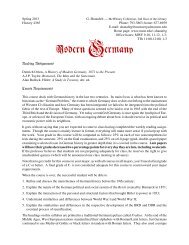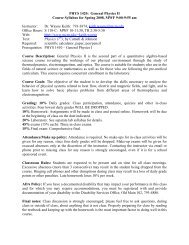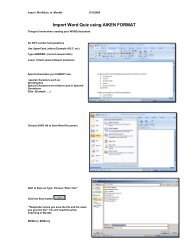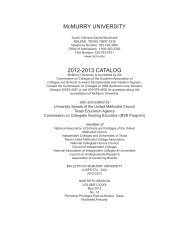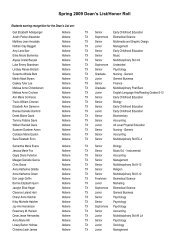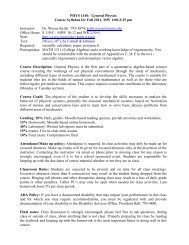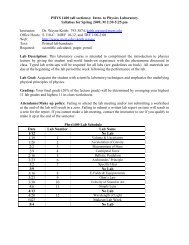Data Interpolation and Its Effects on Digital Sound Quality - McMurry ...
Data Interpolation and Its Effects on Digital Sound Quality - McMurry ...
Data Interpolation and Its Effects on Digital Sound Quality - McMurry ...
Create successful ePaper yourself
Turn your PDF publications into a flip-book with our unique Google optimized e-Paper software.
61.2.2 <strong>Digital</strong> to AnalogIn order for the sound to be heard, the digital sound must be decoded toproduce an analog wave that is then played by speakers or other soundproducingdevices. A <strong>Digital</strong>-to-Analog C<strong>on</strong>verter (DAC) is resp<strong>on</strong>sible for this.Unlike the ADC that samples the analog sound, the DAC samples the storeddigital file at varying bit rates. The DAC c<strong>on</strong>nects the points from the digital file tocreate a c<strong>on</strong>tinuous wave that can then be played back. The DAC can use <strong>on</strong>e ofthree techniques, which will be discussed here.Oversampling is the process of sampling a signal with a samplingfrequency higher than twice the frequency of the signal being sampled (Kientzle31).1.2.2.1 Definiti<strong>on</strong> An oversampled signal is said to be oversampled by afactor of ß, as defined by the formulaffß =2sOr asHf s = 2ßf HWhere f s is the sampling frequency <str<strong>on</strong>g>and</str<strong>on</strong>g> f H is the highest frequency of the signalbeing sampled (Kientzle 31).Oversampling has two notable advantages. First, the higher sampling rateused in oversampling is capable of achieving better resoluti<strong>on</strong> in the digital-to-



